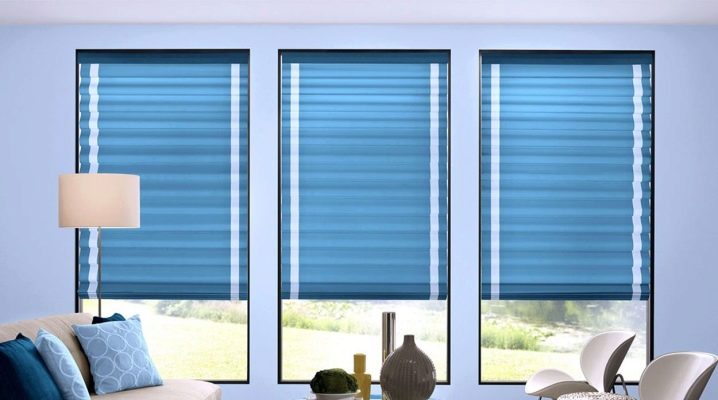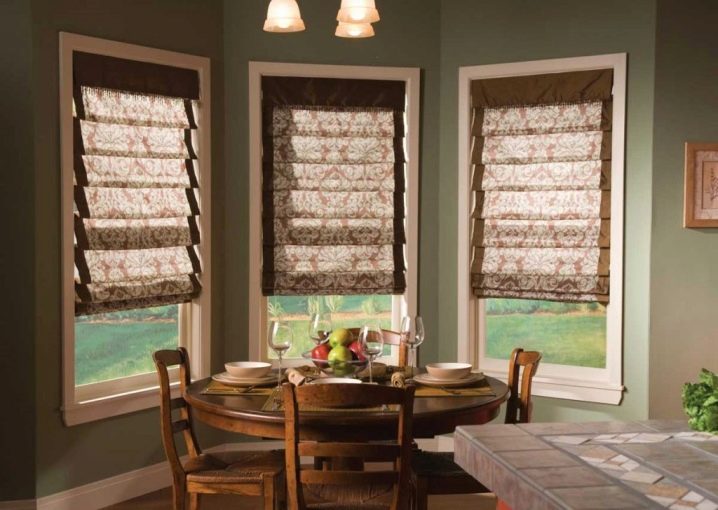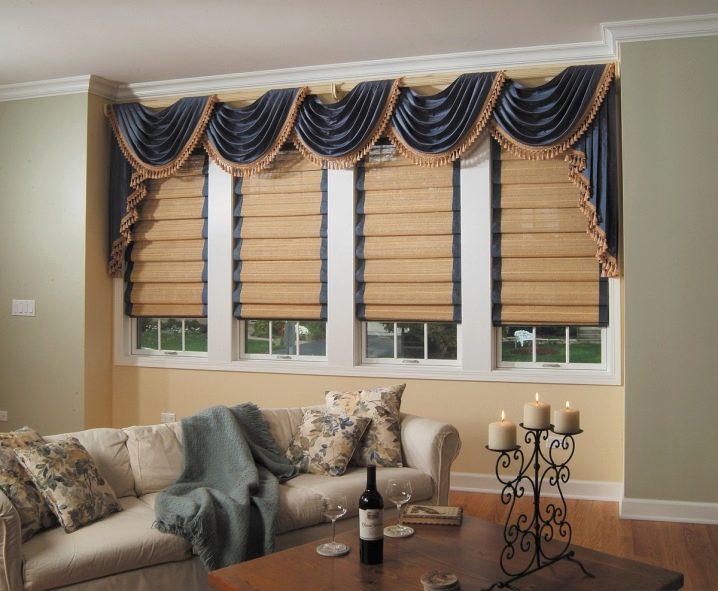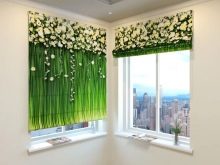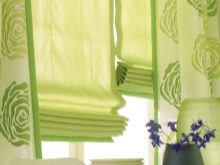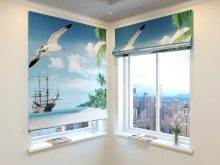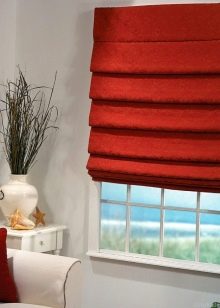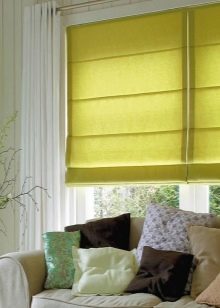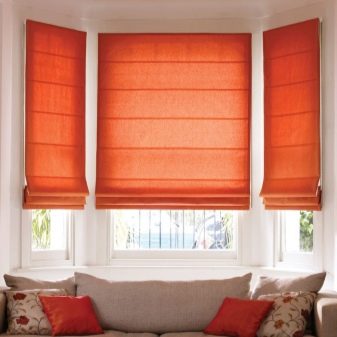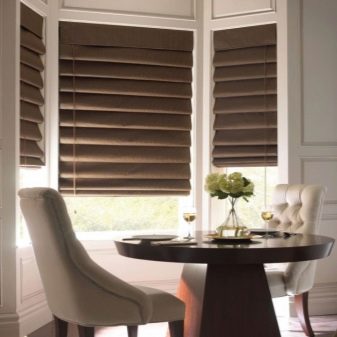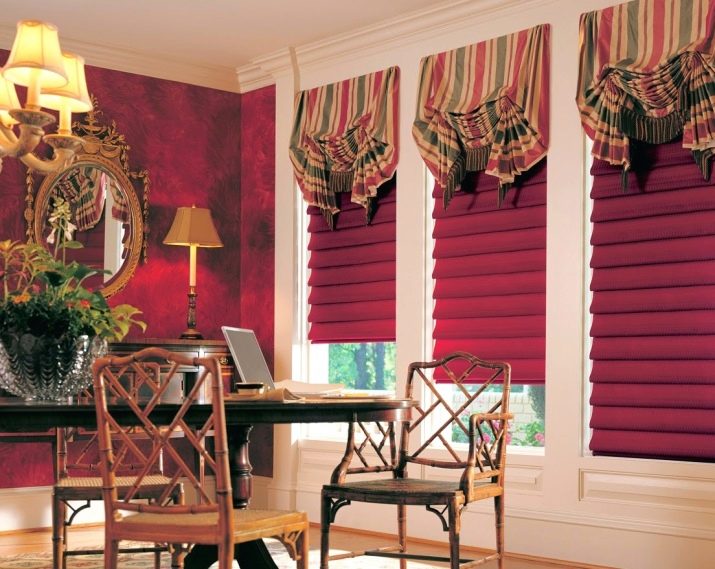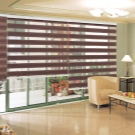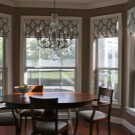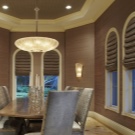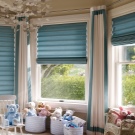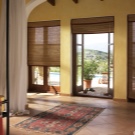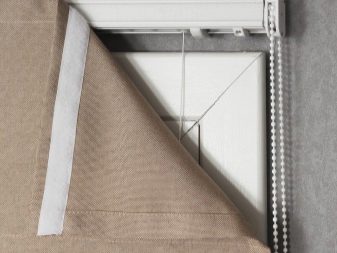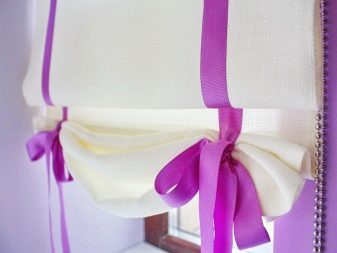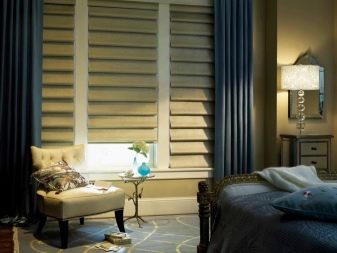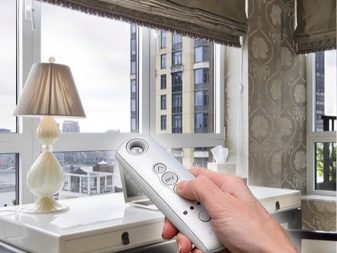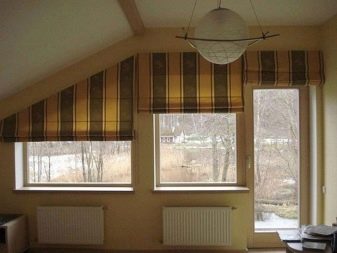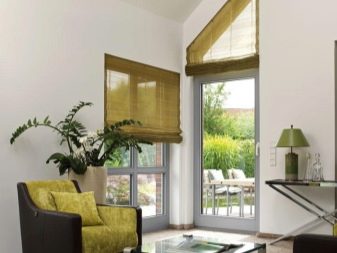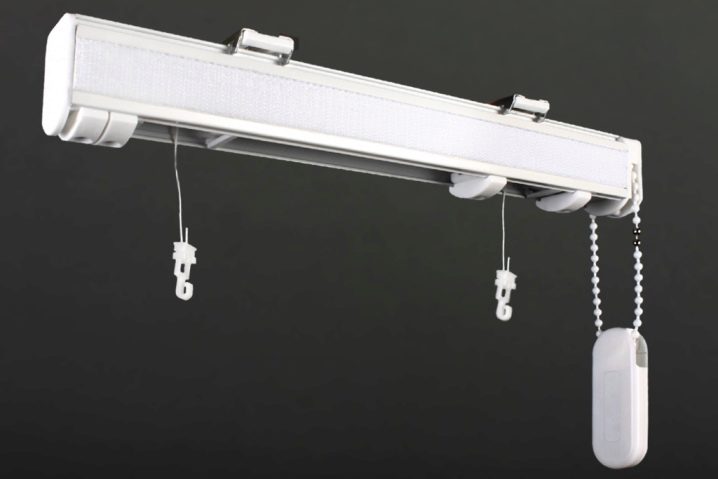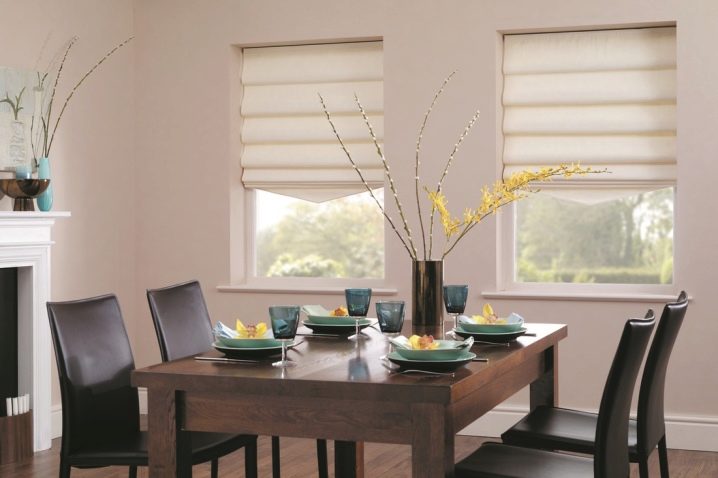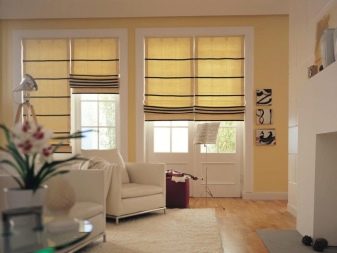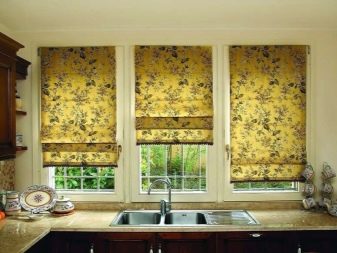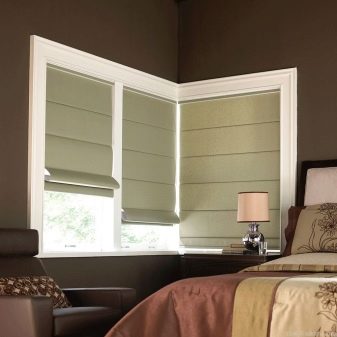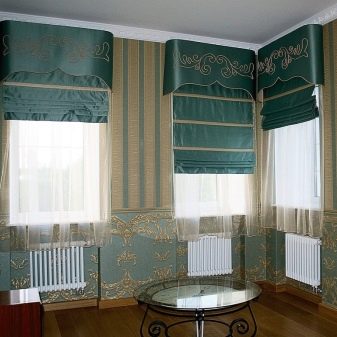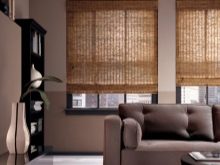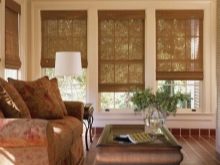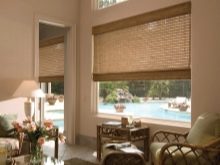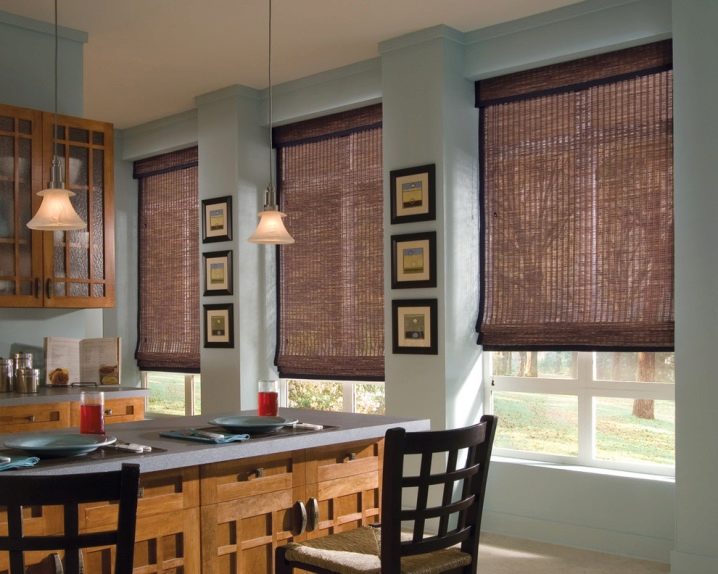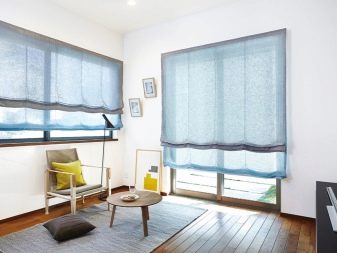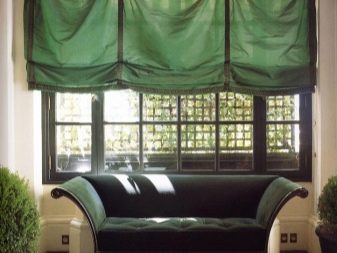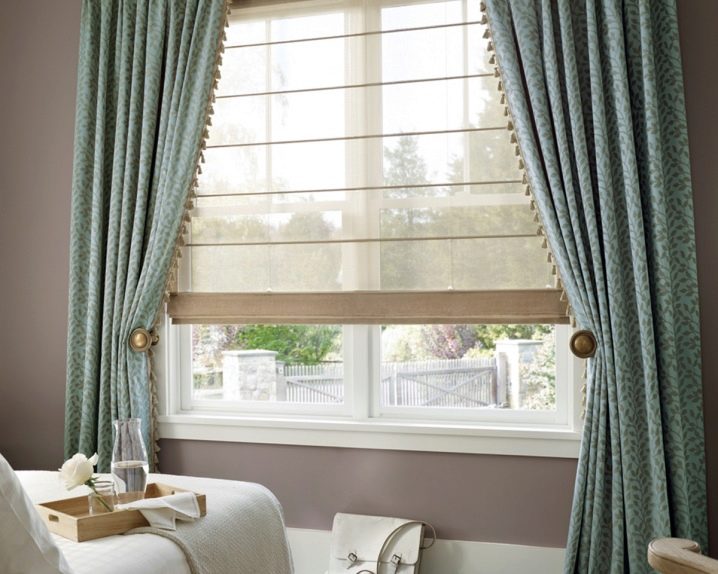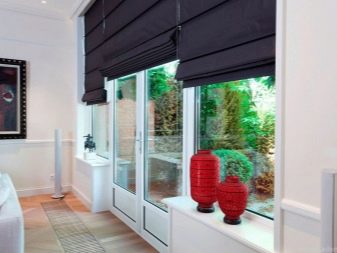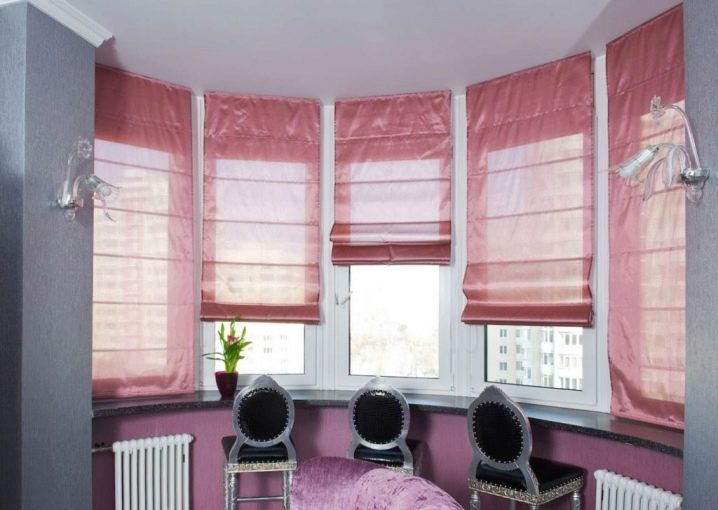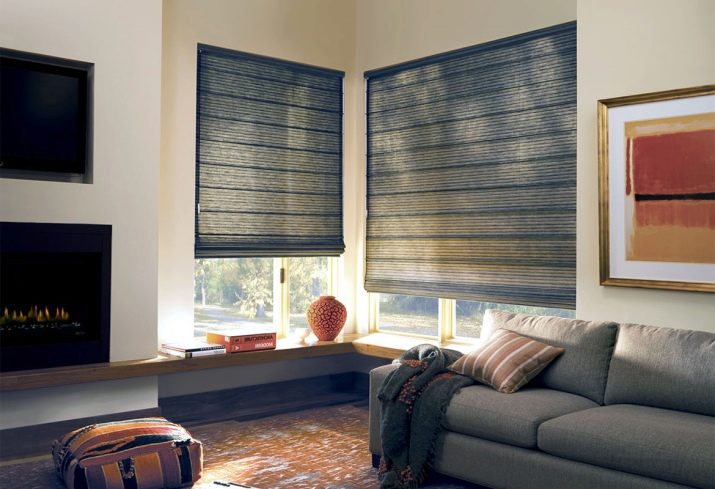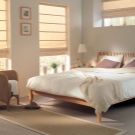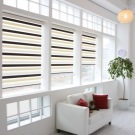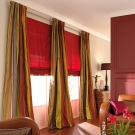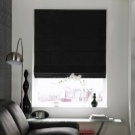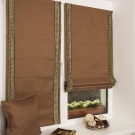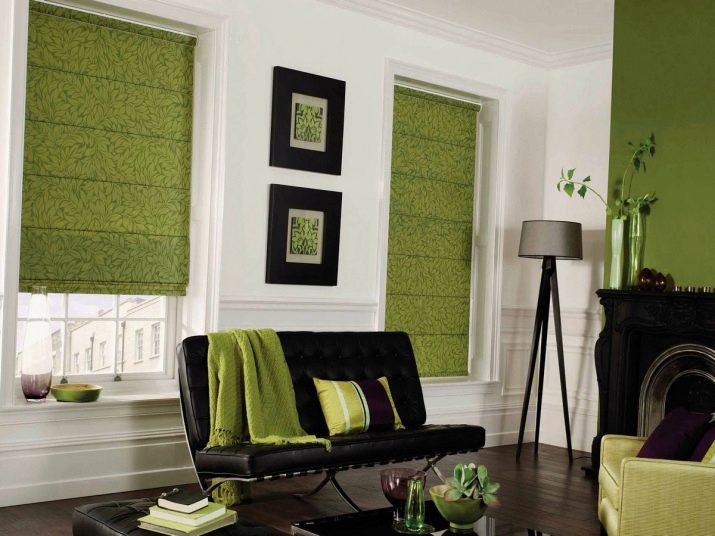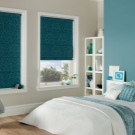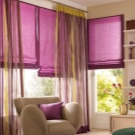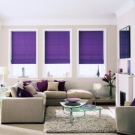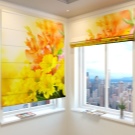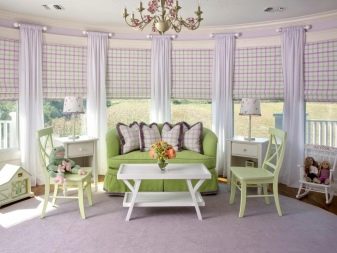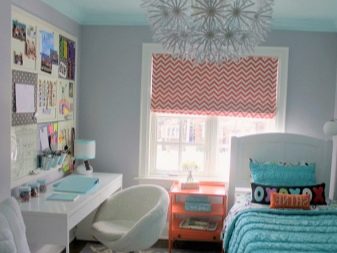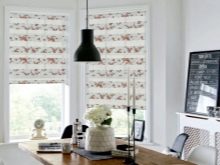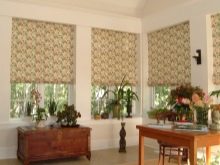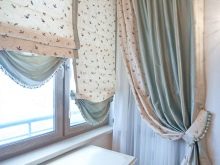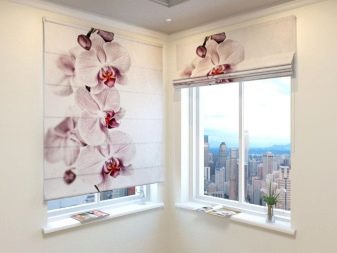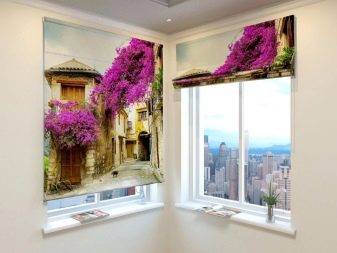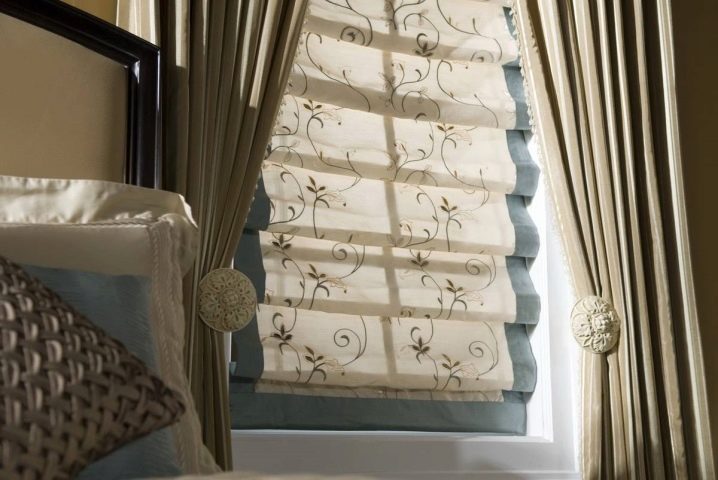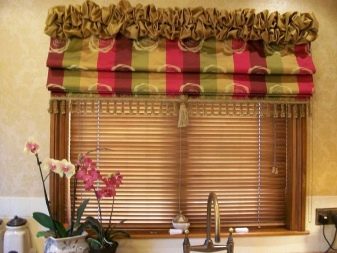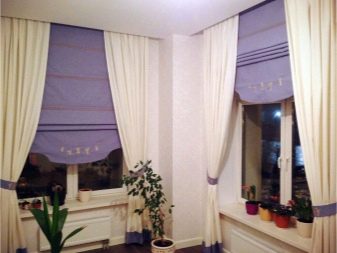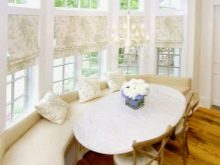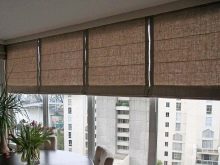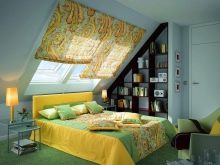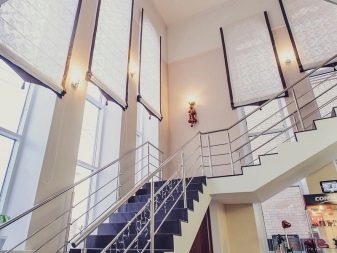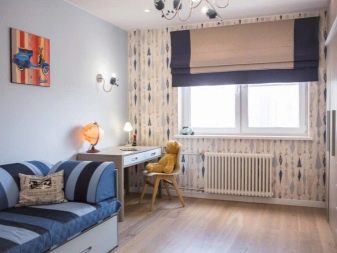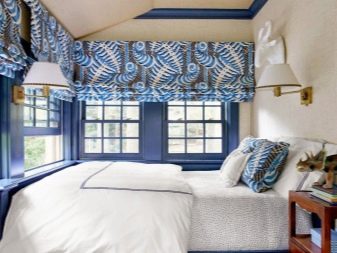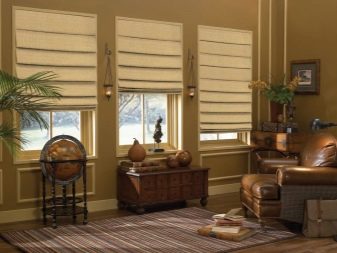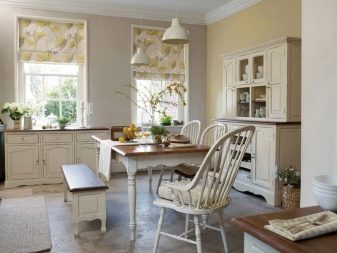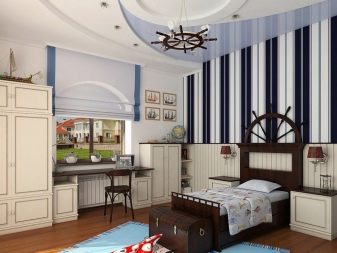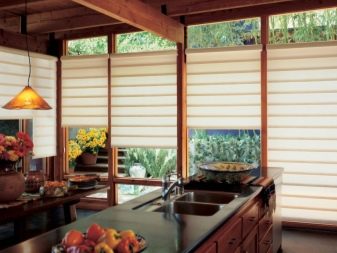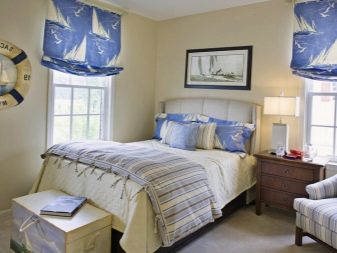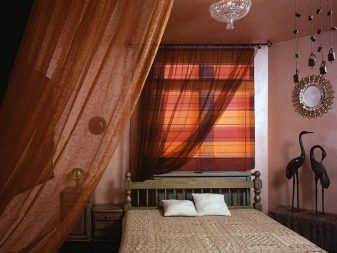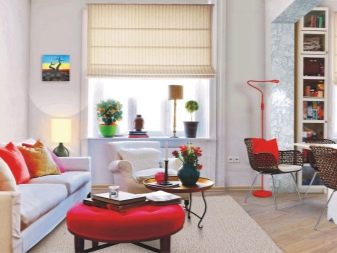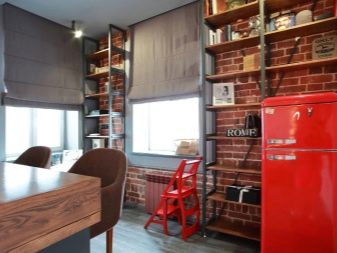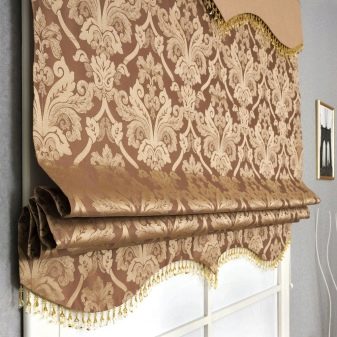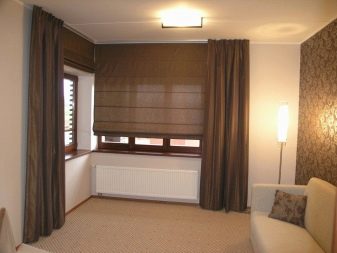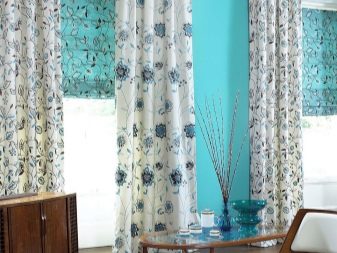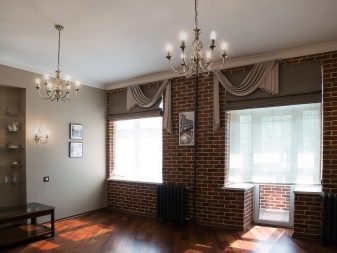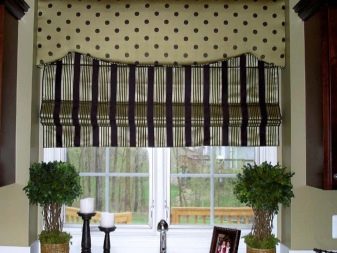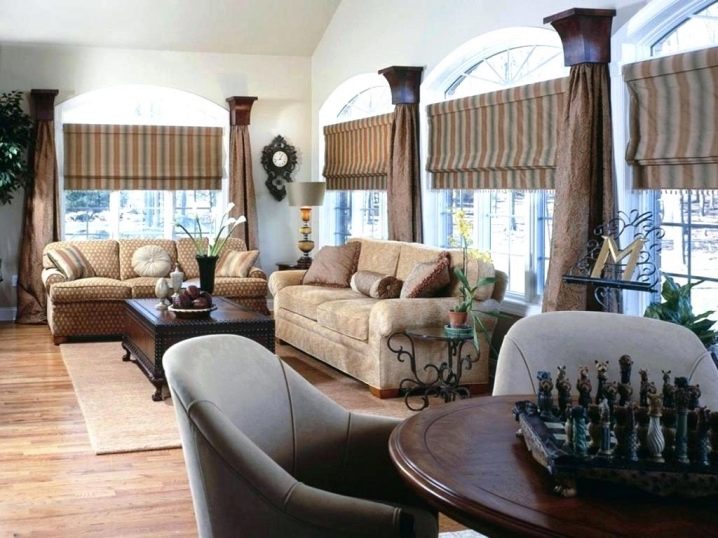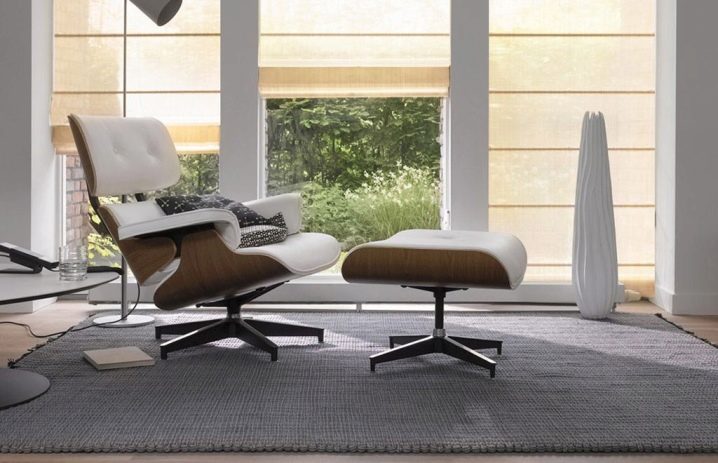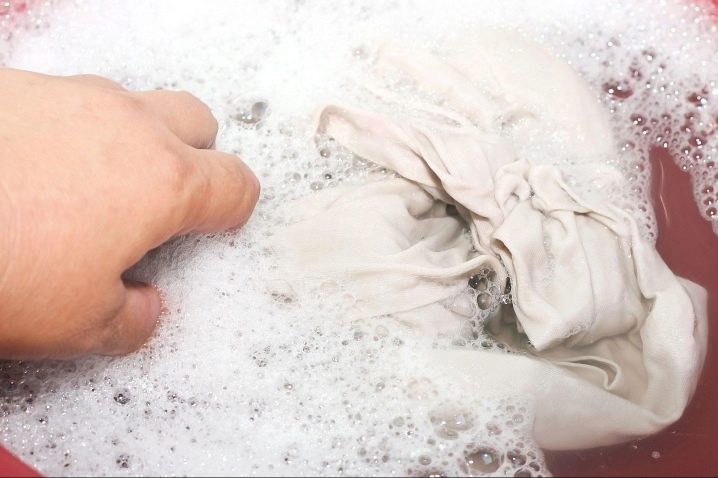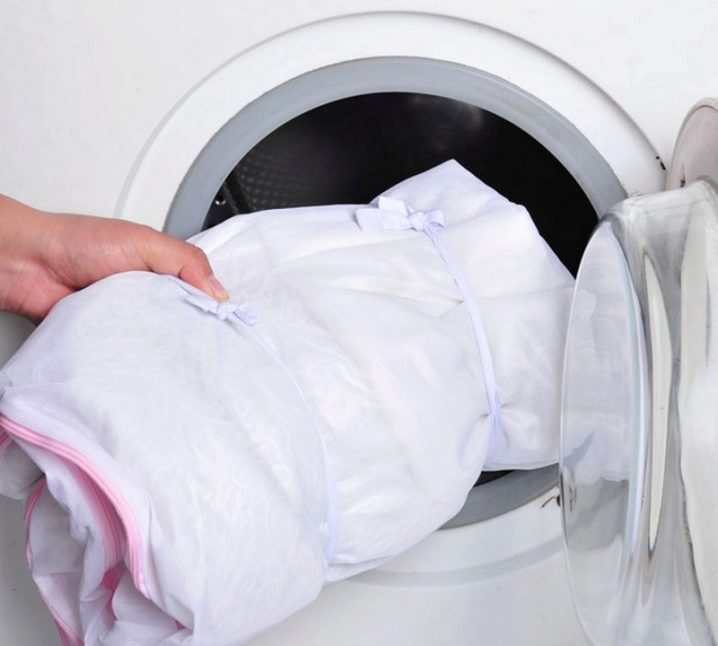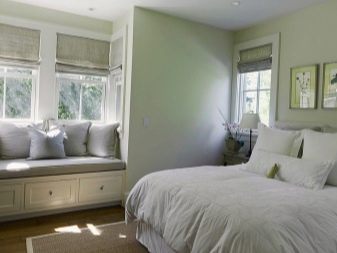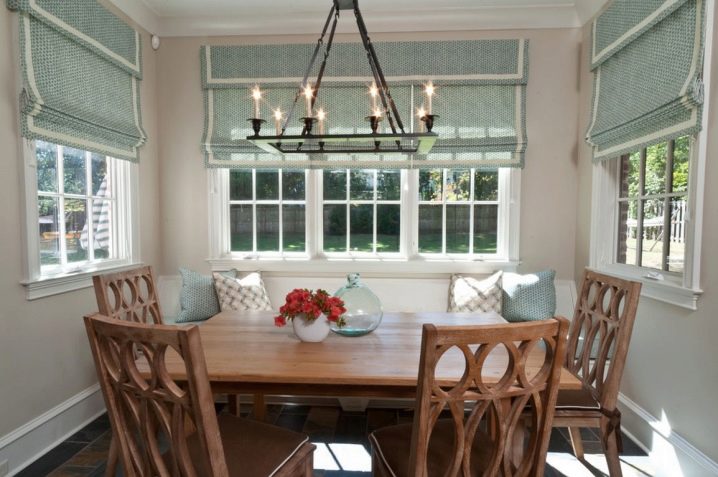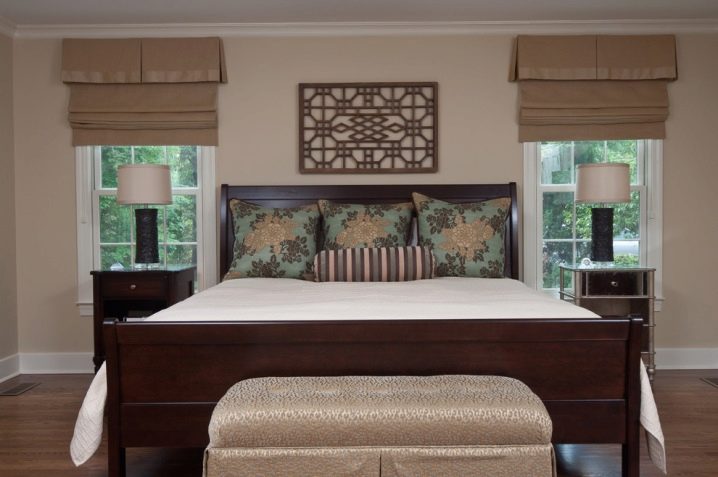Roman curtains: design ideas
There are many ways to decorate windows and control the light in the room, but one of the most versatile is the use of Roman curtains. With their help, you can make almost any living space cozy and comfortable: from the bedroom to the office. In addition, there are absolutely amazing design ideas.
What is it and how does it look?
The history of Roman blinds has been around for several thousand years. It is believed that they were most actively used by the ancient Romans - hence the name. They adopted the “character” from the Romans - rational and practical, however, suitable, first of all, for people with delicate aesthetic taste. They were reborn in modern design in Sweden.Now their popularity is high both in Europe and in other parts of the world.
In fact, such draperies - just a flat cloth fabric, as a rule, with transverse slats. When lifting (moving only up and down), the curtains are collected in wavy folds, thereby creating a special "airy" effect.
Advantages and disadvantages
The main advantage of this type of drapery is efficiency - relatively little fabric is used for sewing Roman curtains. Moreover, their design is so intuitive that they can be made with their own hands. The consequence of such simplicity and rationality is a very light weight.
Roman curtains can be made from almost any specialized fabrics, and special ingredients will ensure their durability. In addition, this type of drapery can be washed, however, with some caution.
The disadvantages of such products are very few. These include, for example, predominantly manual control, although the technologies do not stand still and in the so-called smart houses original models are already used, which react to the level of illumination and tenants' habits. However, this is still a rarity. A more significant disadvantage is the inability to move the curtain in a horizontal direction. It can only be raised or lowered. Thus, quickly look out the window will not work.
Kinds
There are several classifications. For example, the degree of transparency - from transparent to impermeable, or depending on the materials of manufacture. Products can be sewn from cotton, flax, jute, bamboo, wallpaper, various blended materials, and even burlap. Roman curtains are single-layer, two-layer, as well as multi-layered.
The fundamental point is the method of manufacture. Products can be classic (frameless) or cascading.. The first option is the simplest: straight lines in a straightened state and with horizontal folds folded. Cascading (with the so-called overlap) draperies retain a clear wave structure, even when open.
There are also types such as double curtains on the lining (the most luxurious option) "day Night" (consisting of strips, the position of which can be changed without vertical offset), panoramic, arched (mansard), bay windows (for protruding windows), special products for doorways. Self-made creations are not at all amenable to any classifications.
Device, system lifting mechanisms and accessories
When using Roman blinds, the key point is to resolve the issue associated with the use of a mounting mechanism. There are two main options.
- Cord mechanism. One of the oldest and simplest. It is a system of cords. Reliable, simple for self-manufacture and repair, however, has limitations in web size and weight. Not suitable, in particular, for heavy materials. It can be used with a curtain tape, cord lock, mounted on the bracket.
- Automatic with electric drive. Sometimes it is also called motorized. The most modern way. There are no limitations in its use, however, and it will hardly be easy to fix such a mechanism with your own hands. Maybe with a remote control: the user is only required to click on certain buttons to start the automation. An additional effect when using this mechanism creates a framework. In some models using modern technologies, it is possible to have built-in voice control.
In addition, software is being actively developed, which will independently determine the level of necessary illumination depending on the time of day, cloudiness and other factors.
Dimensions
Products vary in size depending on the typical characteristics of windows and other objects that can be closed with curtains. In width, they can be 120 cm, 190 cm, 200 cm, be narrow or, on the contrary, 3-meter. In length, respectively, long and short. Often there are such sizes as 180x160, 160x160, 200x160, 200x180, 50x130, 140x160, 80x175, 140x160 cm and others.
Dimensions can be non-standard, suitable for oblique and oblique windows. Given the fact that the curtains can be homemade, neither the maximum nor the minimum size is not limited. It is solely a matter of taste and need.
Mounts
There are many ways to arrange Roman blinds. They are mounted on the sash, eyelets, velcro, loop or ring. More complex mechanisms are also used. As a rule, branded metal curtain rods with an integrated lifting device are used. On sale there are several basic types:
- Mini - for small items. Used directly on the windows.
- Classic - The size limit here is up to one and a half meters in width and up to about two meters in length. The most common eaves, suitable for most of the usual requests.
- Skos - for objects of irregular shape, those that have bevels, inclined surfaces.
However, you can save on the shop ledge. There are other options. The most simple technique for fastening is a "sticky". One part of it must be glued to a home-made similar to a cornice, the other to a fabric. With this mount, drapes will simply be removed, for example, for cleaning.
You can do even easier: use a stapler or even sew a canvas.
Materials
Theoretically, Roman blinds can be made from any suitable material. However, the choice is better guided by certain goals and prioritize. For example, if you plan to fasten the drape with a cord mechanism, it is better not to use heavy materials. It must be remembered that ultimately it is the fabric that will determine the light balance of the room.
In the practice of design curtains are usually made from the following materials:
- Synthetic fabrics - there is nothing natural in them, however, this does not prevent effective use. Among the advantages are durability and durability, they are difficult to stain, they dry quickly, are relatively inexpensive, but are not always sufficiently aesthetic. Not the best option for the design of the bedroom, however, a good idea for the kitchen or in some cases - the living room. The main thing is that none of those present should have an allergy to synthetics.
- Linen - smooth and slightly shiny, one of the safest materials in terms of allergies, well breathable, which means - a suitable option for a bedroom or a rest room. Perhaps for the living room. The disadvantages are the difficulties associated with washing and drying. It can quickly lose aesthetic qualities, or even break.
- Bamboo - Bamboo draperies are well protected from the sun and some of the best in terms of creating a microclimate are excellently breathable. In addition, they retain their presentable appearance for a long time. By them it is difficult to determine the degree of wear, which often just creates the necessary surroundings and color. Of the minuses - they quickly absorb odors, deteriorate during washing and have a very limited color range - a fee for high naturalness.
- Jute Fibers - A good alternative to the previous material, because it lacks its main disadvantage - the poor palette. However, jute fibers are a rather coarse fabric, it is not for nothing that bags and ropes are produced mainly from it.
- Cotton - one of the most economical options. Cotton is widespread and inexpensive, moreover, it is absolutely natural. However, no less than flax is prone to pollution and even more fragile. It is possible that such curtains will be enough for only a few washes, which, however, is compensated by the feeling of home comfort created by the material.
- Mixed options - a mixture of certain fabrics, synthetic and natural materials. Allows you to correctly combine their disadvantages and advantages. However, the ideal material has not yet been “bred”, so the criterion in the proportions remains a sense of style and taste. Roman curtains can be made from ordinary wallpaper, that is, paper.
Translucency and thickness
Each of the materials may have a different transparency and thickness. Often, they determine the method and place of application. Roman curtains can be transparent (tulle).
For example, in the bedroom cotton or linen tulle it will be good to let the light through, which means to interfere with sleep Although in general, this material is suitable for rest rooms.
It is not excluded its use in several layers. However, it is not always the transparency associated with the thickness of the fabric. For example, curtains of thick and heavy burlap, however, well transmit light.
At the same time, Roman blinds can be translucent or even opaque - Blackout. The latter option blocks more than 90% of sunlight, protects well from an aggressive sun and allows you to control not only light, but also temperature. This material is well suited for both office and residential premises.
On the contrary organza draperies It will be relatively good to pass light. The components of this fabric are, in particular, polyester and silk. To the touch it is tough enough. It has a specific color, it is able to create a special atmosphere - often organza clothes are used in oriental dances, where one of its key properties is manifested - the rich possibilities for light reflection and refraction. The design of the premises is a wide field for creative experiments.
Colors and prints
The range of colors and prints is quite large. The color scheme and pattern will be found for almost every taste:
- To give a feeling of "freshness" to the room white, blue, beige and other light shades.
- Brown, black or red Roman curtains will make the atmosphere more chamber and natural, and the light balance of the room will be saturated and, at the same time, pacifying. Add the effect of warmth, will look stylish in a room with a fireplace or in a room, stylized as a historical format.
- In a lighter form, this effect can be achieved using blue, turquoise or green shades.
- The original choice will be yellow, pink, purple, orange color or shade lavender.
- Such wallpapers are suitable not for all premises, and with this choice it is important to choose furniture that matches the texture and range. For example, with a competent design pink the color will fit well into the bedroom space as well yellow or Orange can decorate a balcony or loggia.
- However, many creative discoveries can be achieved not only by studying and combining colors, but also by selecting matching prints. Roman curtains with various geometric patterns, striped or with flowers, such as daisies, are common. There are also wallpapers with gzhel ornament.
In general, the combination of color patterns on the Roman blinds greatly enhance the feeling of the landscape and naturalness and will suit almost any size of window openings.
- Another option is to buy curtains with photo printing or 3d-models, although in classic interiors they do not always look appropriate.
But they can form the space themselves - quite often after the window decoration has been made, bold design solutions appear. The most relevant and common now prints space, natural, floral themes.
- There are also works in the spirit modern avant-garde, as well as classic beach, romantic and other scenes.
Design options
Not only a variety of colors and prints, but also product design options will help bring the conceived concept of interior to life. So, curtains with edging look like a complete and strictly delineated construction, “gathering” not only light, but also the interior into a single limited space. A similar function is carried by a decorative cord, which creates, among other things, a sense of aristocracy.
On the contrary, the effect of frivolity or playfulness in the room will bring drapes with fringe, tassels or ruffles. These decorative elements also enhance the wave properties of curtains, especially with soft folds.
There are also products with a figured bottom that form an additional optical effect and refresh the space - with the right choice of color and texture, they will harmonize with the floor and the ceiling of the room at the same time. Such solutions look good in the living room, another informal place of the company.
Where to hang?
Roman curtains are almost universal. With the right choice of material and color, they will successfully fit into the interior of many rooms. The most advantageous such draperies will look on the balcony, loggia, attic or balcony door - natural textures are relevant here: suitable, for example, materials such as bamboo or jute fibers.
Roman curtains reasonably hang in the living room, teen room or bedroom, as well as in the office.Such draperies are also popular in office premises - they add coziness and comfort to the workspace.
Roman blinds are suitable for almost any type of housing. It will be beneficial to look at the cottage or in a country house, as well as in a city apartment. In addition, they will effectively and effectively decorate a room with several, including large, windows.
How to choose the style of the interior?
It is recommended to select the color and texture depending on the type of interior:
- So, to style "Provence"which belongs to the light, smooth textures and light or brown shades will do. This approach can also be applied to the modern style, however, dark models will also approach it, perhaps even from heavy materials - this will allow a certain light and spatial balance to be established in the room.
- Interior nautical style also to the paler of the palette - blue, green and even red shades are appropriate here.
- However, if you want to add Asian, oriental flavorFor example, Vietnamese, it is possible to turn to dark colors.
When you make a room in a nautical style, you should not forget about the ripple effect inherent in Roman curtains - you can just emphasize it.
- For Scandinavian style simple and natural materials will do.The relative simplicity of the style can be compensated by a variety of textures.
- A similar approach is valid for loft styleHowever, it is important not to abuse contrasts. The style is already colorful and saturated, which means that the curtains should bring into it just a harmonizing function.
- AT classic styles Romanian curtains made of heavy materials are not excluded. They will give greater credibility to the texture of the furniture and the color scheme of the room.
How to combine with tulle and curtains?
Most often, the curtains replace the tulle and hang next to the curtains, just below their upper part.
It is recommended either to use the same fabric - then the windows in the interior are not distinguished and are almost indistinguishable from the walls or else focus on any one element of the decor - curtains or curtains. They can be decorated with cords or tassels.
If the curtains are purely decorative, it is permissible to use one cornice and velcro, however, in this case the mechanism for raising the Roman curtains should be placed far behind the curtains. Looks beautiful with a drape on the grommet.
However, no one forbids the use of Roman blinds and tulle. Then the first performs a primarily practical function - protection from the sun's rays, and tulle - decorative. The reverse is also possible, but it is somewhat more complicated and less common.
Roman blinds can be combined with lambrequin, however, then the drape should also be decorative. This is a good option for style. "Country". Effectively Roman blinds are combined with curtains.
What to consider when choosing?
When choosing a product should take into account a number of points. First of all, the size of the window or opening, where the drapery will be located. When self-fabricating, it is better to take fabric with a margin, even with a small window.
Another point - the texture and color. They are best chosen depending on the style of the interior. However, the option of forming a style is not excluded, depending on the shape of the window and the color of the curtains. In this case, it is desirable to come to the store with a ready-made design idea, under which and look for a suitable product format.
It is recommended to pay attention to the presence of decorative elements, for example, cords, in harmony with the selected type of curtains. It is also necessary to immediately determine the mechanism for lifting curtains - whether it will be cord or automatic.
And the last - when buying, depending on the intended place of use, you should not make a mistake in choosing the material. For example, bamboo, flax or cotton absorbs odors well, so they are not always appropriate in the kitchen.
Care Tips
One of the advantages of Roman blinds is their non-darkness, however, this does not mean that they absolutely do not need to be followed. On the contrary, such products often need to be cleaned and washed. And it is not intensity that is important here, but accuracy and regularity.
How exactly to take care of their pure form and safety depends on the material of the product:
- If the curtain is made of non-classical material, for example, jute fibers or bamboo, it is unacceptable to wash it - spoil immediately. It is necessary to clean, and preferably not removing. You can use a vacuum cleaner or a brush - just not hard. Moreover, the product must first be wrapped with a soft cloth and in any case not wet. Use of cleaning agents is allowed. However, pollution can be avoided if you regularly ventilate the room, especially since products made from such materials very well allow air to pass through.
- Cloth curtains can be washed, but carefully. Some materials, such as flax or cotton, can deteriorate after just a few washes, so do not rush to put curtains in the washing machine. First, it is better to soak them gently, minimizing the mechanical effect if possible. Moreover, it is not necessary at this moment with your hands to actively try to remove stains.
- After soaking, you can wash them in a delicate mode (no spin!), But it is better, if time and effort allow, by hand washing. Cotton, in particular, is not machine washable at all. After water procedures, it is important not to forget to remove all residues of cleaning products from the surface of the drapery. Further, when the main part of the moisture comes out of the material, you need to immediately hang the curtains without squeezing them. The last tip does not apply only to velvet fabrics - they are dried in a horizontal position.
- Curtains can be dry-cleaned if necessary. - It is often better than independent experiments with cleaning products. But, anyway, Roman blinds need regular hygiene. Always keep a dry brush on hand. Otherwise - the dirt can penetrate deep into the fabric of the product and remove it will be extremely difficult.However, be careful - do not tear the curtains, do not stretch them unnecessarily. With proper operation, Roman blinds will last long enough.
Stylish design ideas for plastic bedroom windows
Roman curtains are well suited for the decoration of plastic bedroom windows. And they will successfully fit into the interiors with one window, and with several windows or a panoramic view. They will reliably protect the room from both excess sunlight and prying eyes.
Concise solutions will look good. Simple, natural materials with an interesting texture. They will not distract attention, allow you to collect your thoughts and tune in to a good rest. This format is suitable for different styles - “Loft ", Scandinavian and others.
It is better not to burden the window space in the bedroom with unnecessary decorative elements. It is not always reasonable to combine curtains with curtains, pelmets or tulle here. Naturalness is top priority.
Especially, if the room is decorated, located in a rustic wooden house, and the curtains are chosen on the veranda. In this case, you can use curtains with simple geometric patterns or floral (dim) compositions.
If the bedroom is decorated in light colors, the headboard of the bed is massive and shades the interior with its texture, beige mini Roman curtains with brown ornament on the part of the fabric canvas (on the sides) will do. In general, the tone of the curtains can be a little darker than the tone of the room - this is true for the bedroom and creates a feeling of shade, so important for a good sleep.
With proper design approach, Roman curtains in the bedroom, as well as in any other room, will add a feeling of comfort, as well as provide new possibilities for controlling the light.
How to sew roman blinds on your own, see the next video.
